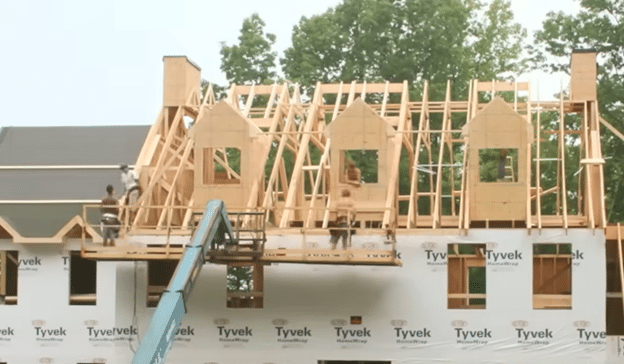
It’s a sad thing, but when the Baby Boomers, those born between 1946 and 1964, pass away, millions of homes are going to hit the market all at once simultaneously year after year, wave after wave, and home prices will be impacted.
All told, by 2040, perhaps more than 35 million of the current 73 million Baby Boomers will have died. Again, it’s really sad. But it also has market implications that sadly must also be contemplated.
A housing shortage today could gradually shift to surplus inventory depending on the market and construction, and prices will soften and maybe even come down. It’s a potential boom, then bust. The same thing is already happening in Europe, Japan and South Korea — particularly advanced cases of population collapse with ghost towns emerging — all amid collapsing fertility.
But first, the boom: Today, housing has never been more expensive relative to incomes.
In 1984, household median income was $22,420 according to the U.S. Census Bureau and the average price for an existing home was $67,000 according to a Dqydj.com analysis of National Association of Realtors, Case-Shiller and FHFA NSA Existing Home Sale Index data — with income accounting for 33 percent of home prices.
40 years later, in 2024, household median income was $83,730 and the average price of an existing home is $411,000 — with income at 20.3 percent of home prices. It’s never been this bad, and in 2025 the price is already averaging $423,000.
The last time housing was this unaffordable really was in 2006, right before the housing market crashed. Then, median income was $48,200 and the average home price was $213,706—with income at 22.5 percent of home prices.
In the crash, by 2011, it went back closer to its 1984 level: Median income was $50,050 but the average home price had collapsed to $172,072 — with income 29 percent of home prices.
Right before Covid, in 2019, it wasn’t so bad: Median income was $68,700 and the average home price was $260,772 — with income 26.3 percent of home prices.
Then, we printed $6.3 trillion during and after Covid, experienced the worst inflation since the 1970s and 1980s, and now housing affordability is worse than ever, again, with income just 20.3 percent of home prices.
One big difference between today’s unaffordability versus that of 2006 are supplies: Whereas the market was being flooded at the time of the housing crash, housing starts were peaking at 2.27 million in January 2006, today it’s just 1.3 million. There are fewer mortgages, too. The number of mortgage holders had skyrocketed from 80 million in 2003 to 98 million in 2008 and back to 80 million in 2019, according to New York Federal Reserve data. Today, it’s now 86.5 million.
In 2006, there was massive speculation on the market. After the crash, construction slowed down substantially — just 478,000 housing starts by April 2009 back to just 1.3 million now according to Department of Housing and Urban Development data— so that now there’s a true shortage. Back then, there were too many houses. Now, there’s not enough.
That’s the pinch that every household, particularly those who pay rent and wish they could afford a home, are feeling. For them, home ownership appears unattainable. The median age of first-time homebuyers is now up to 40 up from 33 in just 2021, according to the National Association of Realtors. Higher relative interest rates awaiting current home sellers also makes selling less attractive, further restricting supply.
What does everyone think that will do to fertility? The marriage rate in the U.S. has dropped from 67 percent in 1970 to 51.8 percent today among men, according to the U.S. Census Bureau. Every year it keeps dropping. That means even fewer families going forward. Unaffordability is a major contributing factor.
And yet, it won’t last forever. Assuming there isn’t a crash sooner — and then we’ll have a whole different problem — eventually, a combination of new homes hitting the market through Baby Boomer mortality but also continued home construction, and supply might surpass demand amid shrinking demographics and the price growth seen now should cool significantly relative to incomes or even decrease.
In other words, the affordability crisis being experienced now will eventually smooth itself out. But politics and the mood the public is now. The pinch is now. Price cooling could be sped along by significant increases in housing starts, for example, which right now are flat, only to find out later that there were once again too many houses amid collapsing demand.
There’s an off chance, but depending on what is done, policymakers complaining about shortages today could be cleaning up another housing wipeout tomorrow. Stay tuned.
Robert Romano is the Executive Director of Americans for Limited Government Foundation.






